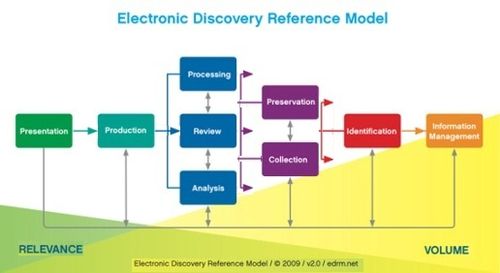Plaintiffs’ Supreme Effort to Recuse Judge Peck in Da Silva Moore Denied – eDiscovery Case Law

As we discussed back in July, attorneys representing lead plaintiff Monique Da Silva Moore and five other employees filed a petition for a writ of certiorari with the US Supreme Court arguing that New York Magistrate Judge Andrew Peck, who approved an eDiscovery protocol agreed to by the parties that included predictive coding technology, should have recused himself given his previous public statements expressing strong support of predictive coding. Earlier this month, on October 7, that petition was denied by the Supreme Court.
Da Silva Moore and her co-plaintiffs had argued in the petition that the Second Circuit Court of Appeals was too deferential to Peck when denying the plaintiff’s petition to recuse him, asking the Supreme Court to order the Second Circuit to use the less deferential “de novo” standard.
The plaintiffs have now been denied in their recusal efforts in four courts. Here is the link to the Supreme Court docket item, referencing denial of the petition.
This battle over predictive coding and Judge Peck’s participation has continued for over 18 months. For those who may have not been following the case or may be new to the blog, here’s a recap.
Last year, back in February, Judge Peck issued an opinion making this case likely the first case to accept the use of computer-assisted review of electronically stored information (“ESI”) for this case. However, on March 13, District Court Judge Andrew L. Carter, Jr. granted the plaintiffs’ request to submit additional briefing on their February 22 objections to the ruling. In that briefing (filed on March 26), the plaintiffs claimed that the protocol approved for predictive coding “risks failing to capture a staggering 65% of the relevant documents in this case” and questioned Judge Peck’s relationship with defense counsel and with the selected vendor for the case, Recommind.
Then, on April 5, 2012, Judge Peck issued an order in response to Plaintiffs’ letter requesting his recusal, directing plaintiffs to indicate whether they would file a formal motion for recusal or ask the Court to consider the letter as the motion. On April 13, (Friday the 13th, that is), the plaintiffs did just that, by formally requesting the recusal of Judge Peck (the defendants issued a response in opposition on April 30). But, on April 25, Judge Carter issued an opinion and order in the case, upholding Judge Peck’s opinion approving computer-assisted review.
Not done, the plaintiffs filed an objection on May 9 to Judge Peck’s rejection of their request to stay discovery pending the resolution of outstanding motions and objections (including the recusal motion, which has yet to be ruled on. Then, on May 14, Judge Peck issued a stay, stopping defendant MSLGroup’s production of electronically stored information. On June 15, in a 56 page opinion and order, Judge Peck denied the plaintiffs’ motion for recusal. Judge Carter ruled on the plaintiff’s recusal request on November 7 of last year, denying the request and stating that “Judge Peck’s decision accepting computer-assisted review … was not influenced by bias, nor did it create any appearance of bias”.
The plaintiffs then filed a petition for a writ of mandamus with the Second Circuit of the US Court of Appeals, which was denied this past April, leading to their petition for a writ of certiorari with the US Supreme Court, which has now also been denied.
So, what do you think? Will we finally move on to the merits of the case? Please share any comments you might have or if you’d like to know more about a particular topic.
Disclaimer: The views represented herein are exclusively the views of the author, and do not necessarily represent the views held by CloudNine Discovery. eDiscoveryDaily is made available by CloudNine Discovery solely for educational purposes to provide general information about general eDiscovery principles and not to provide specific legal advice applicable to any particular circumstance. eDiscoveryDaily should not be used as a substitute for competent legal advice from a lawyer you have retained and who has agreed to represent you.






